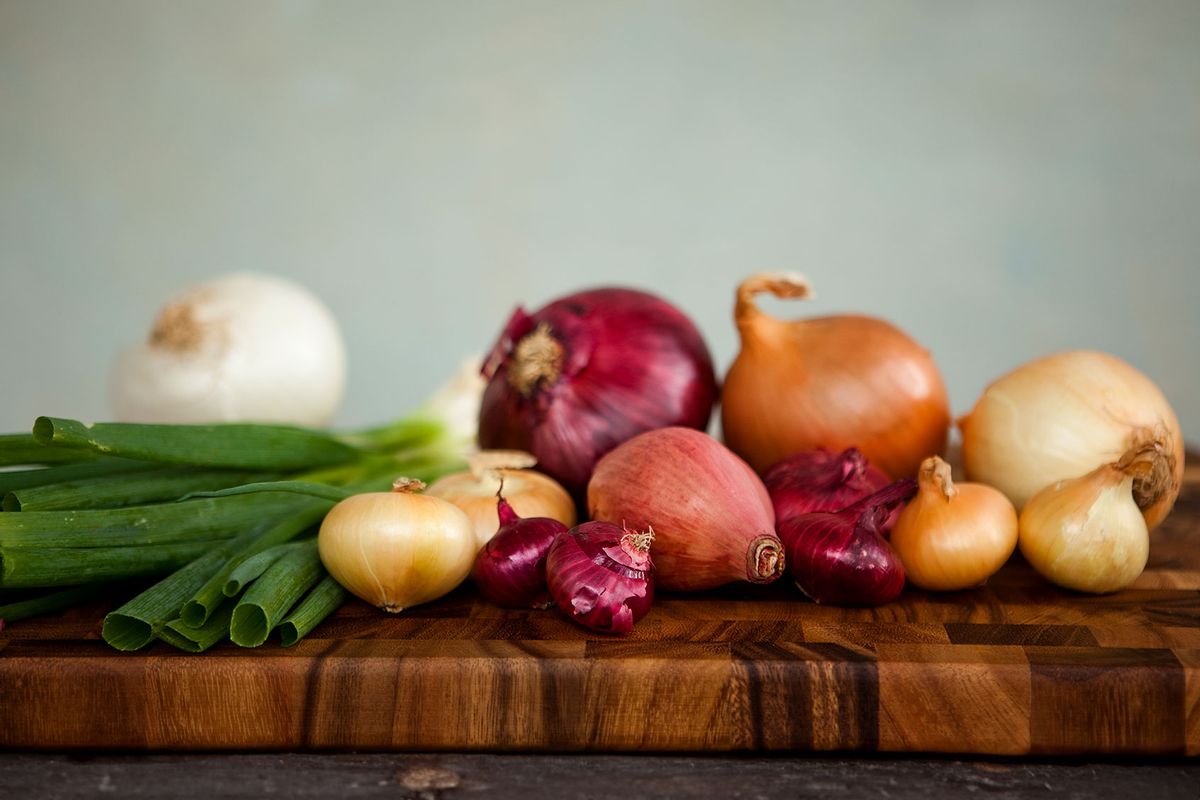Author and journalist Mark Kurlansky and I have something in common. We both really adore onions.
No matter if red, white, yellow, Vidalia (or even shallots, leeks, scallions or other allium), I will eat them with reckless abandon. I love chopping onions. I love the smell of them, both cooked or raw. I love the tactile nature of working with them, perhaps as evidenced by the fact that I’ve caramelized maybe a dozen of them over the course of just the past two weeks or so.
I could go on and on — and I’m not alone.
One of Julia Child’s most famous quotes is “it is hard to imagine a civilization without onions; in one form or another their flavor blends into almost everything in the meal except the dessert.” In Kurlansky’s new book, “The Core of an Onion: Peeling the Rarest of Common Food,” he examines how that observation came to be true, and just how wild it is that an everyday supermarket staple has such a global footprint.
“Onions have flourished in just about every climate and culture around the world and not only been used for cooking but also for medicinal purposes, and as inspiration for artists, and everything in between,” Kurlansky told Salon.
This isn’t the first time that Kurlansky has taken a deep dive into singular, particular ingredients. His past books include: “The Big Oyster: History on the Half Shell,” “Cod: A Biography of the Fish that Changed the World,” “Milk! : A 10,000-Year Food Fracas” and “Salt: A World History.”
So, why onions?
We need your help to stay independent
"For onions, the new perspective that I found while writing and researching is that we are all different and we are all the same — no matter where you live or how old you are, you’ve eaten onions,” he said. “Also, the enduring popularity of the onion for thousands of years shows that though things can be common, they are not necessarily ordinary."
He continued: “Besides a lifetime love of eating and cooking with onions, it is a food with many numerous unique and incredibly fun attributes and histories. There is no other vegetable with a defense mechanism that if you attack it, it will spit sulfuric acid in your eyes.” (As a cook, that last line garnered a real head nod from me, just as I’m sure it did for you.)
According to Kurlansky, there isn’t any trace left of the wild onion from which cultivated onions were eventually developed, but it seems to have started somewhere in the Pamir Mountains from Pakistan to Tibet, “maybe Turkestan or Uzbekistan.. “The first culture assumed to have consumed onions were the Sumerians, "who lived in what is present-day Iraq [and] are often credited for the first written record of eating onions, but they are often credited for the first written record of many things, because they were the first to develop a written language."
"There is no other vegetable with a defense mechanism that if you attack it, it will spit sulfuric acid in your eyes."
By 2500 B.C.E, trade routes had developed all throughout the Middle East, extending to Egypt and across the northern Mediterranean to Turkey and Europe, and then eventually eastward trade moved through Asia. “Onions and onion seeds probably traveled some of these routes,” he said.
From there, various civilizations throughout time have grown and used onions in many, many different ways — though not all of them culinary.
For instance, Pliny the Elder, the ancient Roman author and philosopher, developed 27 different medical remedies using onions, ranging from curing bad vision and insomnia, to healing dysentery, mouth sores and toothaches. In Medieval Europe, people thought onions might prevent hair loss and clear up bad coughs, while Hippocrates, who is considered the father of medicine, prescribed onions to prevent pneumonia, as a diuretic and for healing wounds.
Want more great food writing and recipes? Subscribe to Salon Food's newsletter, The Bite.
In the realm of cooking, onions can sometimes be viewed as the unsung heroes of the kitchen because of both their distinct flavor and their versatility.
“Onions have many personalities,” Kurlansky said. “They can be strong and biting or soft and sweet. They have a considerable content of sugar, dextrose and how much of this is brought out is at the discretion of the cook."
Perhaps this is why, when asked about his favorite uses of onion, Kurlansky’s answers are as broad and varied as the potential uses of onion itself: in the book, he includes recipes for encebollado, a “Peruvian condiment of red onions marinated in lime,” for glazed Sicilian onions with orange blossom honey, and for James Beard’s iconic onion and sardine sandwich; he waxes poetic about cool, creamy vichyssoise, served in a metal bowl sitting on a dish of shaved ice; he also points to a distinctly American favorite, a cheeseburger served with thin slices of red onion, as well as a side of battered onion rings.
There’s a certain universality and accessibility to onions that have lent them importance outside of the kitchen.
For instance, Kurlansky was interested to learn of the “political and historical importance of onions in India,” which is the second greatest producer of onions worldwide behind China. The onion is such a staple there that Indira Gandhi, the country’s third prime minister, “triumphed with a national campaign that used the high prices of onions as a symbol of economic mismanagement.”
Interestingly, Kurlansky also notes how the onion crop "was originally developed in Bermuda and then in the 1890s, planted in Texas, [which] took over the market completely. America imposed taxes on onions from other countries and that was the end of the Bermuda onion business." The onion, a staple in food and culture, clearly also has vast implications on economy, politics and trade, too.
“No matter the time period, the culture or the climate — we all eat onions,” Kurlansky said.



Shares